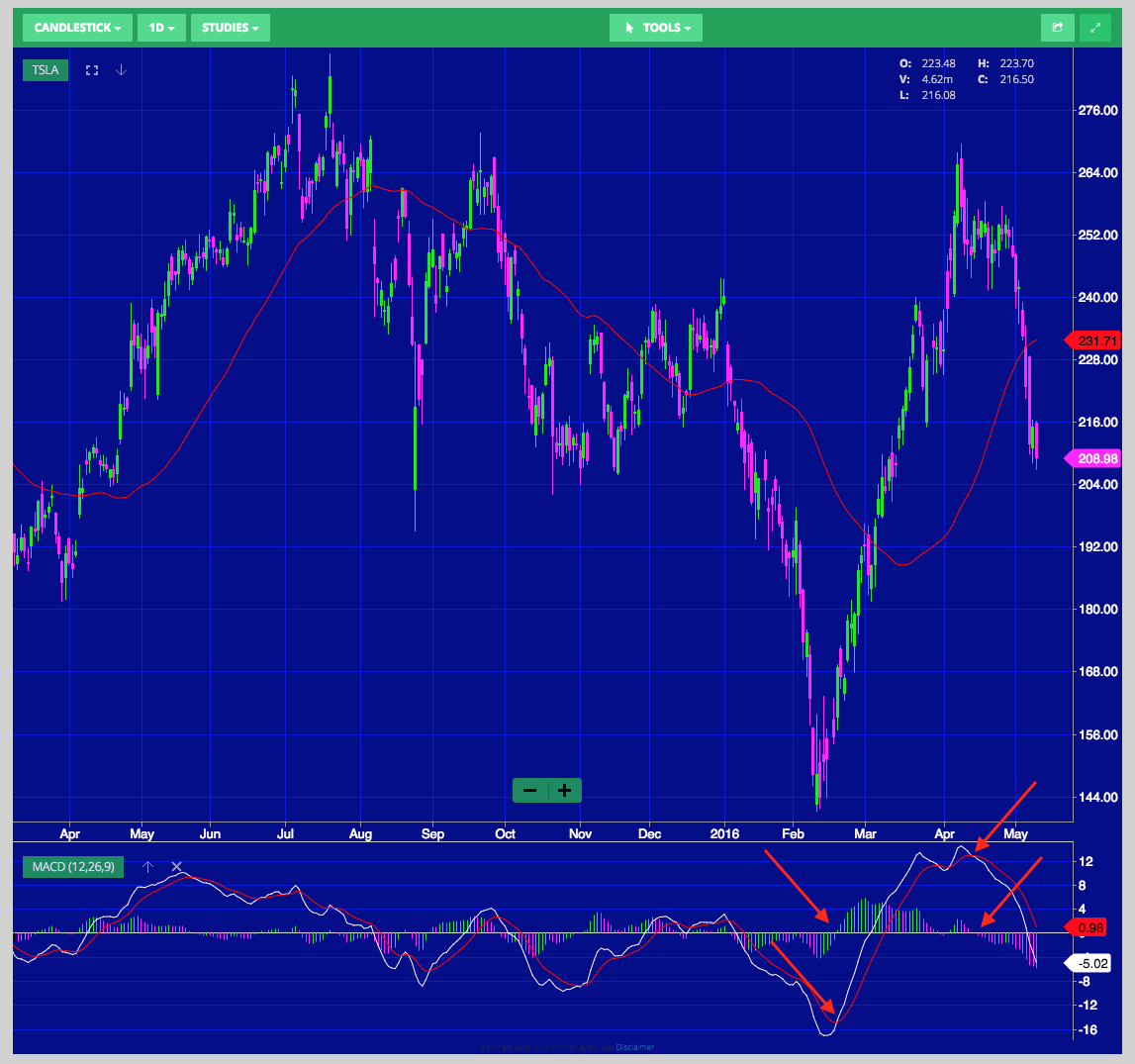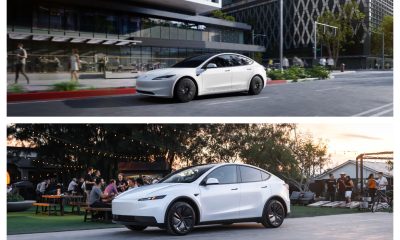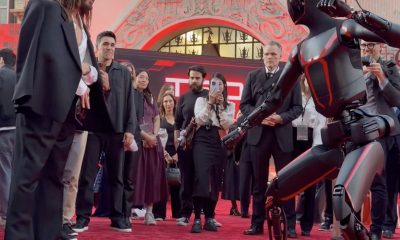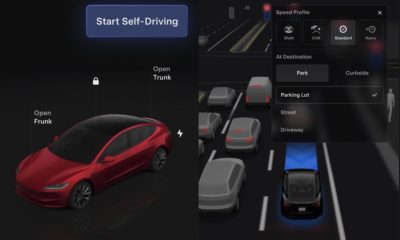Investor's Corner
Tesla stock (TSLA) one week after the Q1 2016 Report
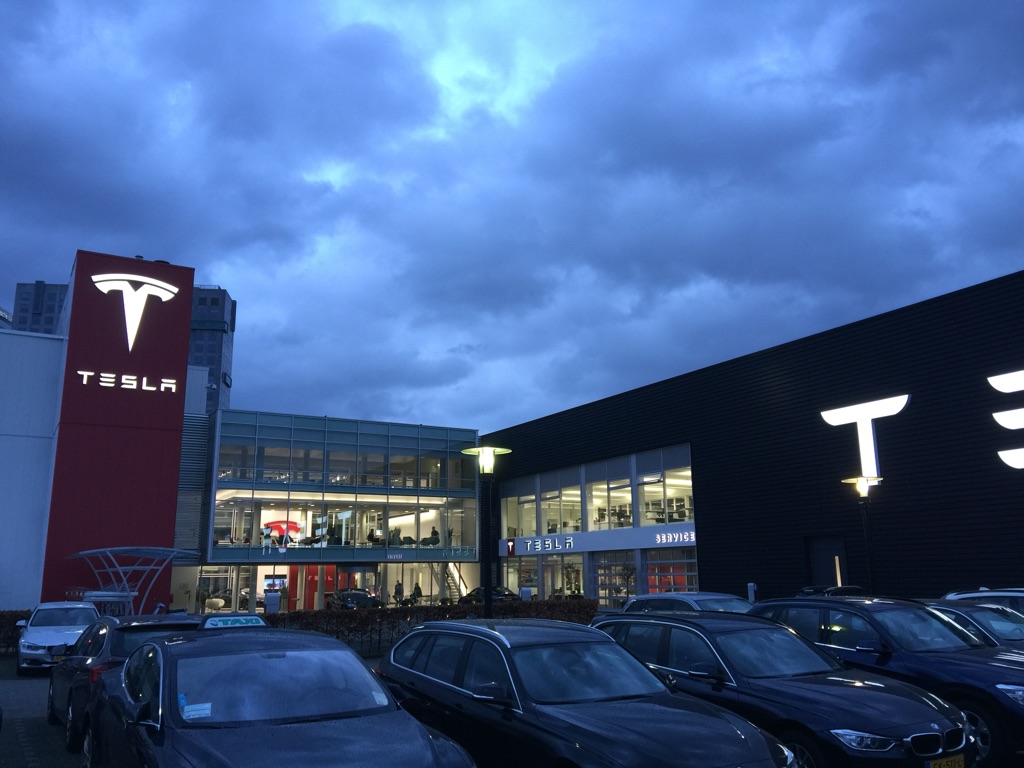
Post Q1 Report Action
The technical response of the stock market to last week’s Tesla Q1 2016 report has been mostly negative. The stock lost quite a bit since last week, standing at around $208 when I write this, but overall 12-month Analyst Price Targets have actually increased with the average raising from $253 to $277, indicating that the Top Analysts did not see the report as negatively as this past week’s market action.
This is a small sample of the reactions from Top Analysts, noting that none of them changed their position to BUY, SELL or HOLD.
Adam Jonas of Morgan Stanley, reiterated a BUY with $333 price target, commenting that “we forecast ~70k units in 2016 (vs. the reiterated guidance of 80-90k shipments), which is composed of ~16k Model X and ~54k Model S units. In 2Q, we forecast ~17k deliveries–inline with the outlook.”
Charlie Anderson of Dougherty resumed coverage of TSLA with a BUY and price target of $500, noting that “the focus coming out of the Q1 report is on managements decision to pull-forward its production goal of 500K vehicles from 2020 to 2018. While this aggressive schedule certainly increases the risk of nearer-term stumbles, it also significantly pulls forward the earnings power. Tesla has set a goal to produce 1MM vehicles by 2020, roughly 2x what most observers previously believed. Our view is that demand is not the question; it is solving the manufacturing challenges deftly as they come.”
Brian Johnson of Barclays reiterated a SELL with $165 price target.
Ryan Brinkman of J.P. Morgan reiterated a SELL with $185 price target, as he “Doubts Tesla Motors Can Meet Accelerated Production Target.”
Colin Rusch or Oppenheimer reiterated a BUY with $385 price target, indicating that “we believe the critical characteristic of TSLAs business model over the next 24 months will be operating leverage. We believe the company can achieve 15%+ incremental operating margins as it ramps the Model 3. We modeling TSLA reaching 500k vehicles in 2019 vs. the target of 2018, noting the company has a history of setting nearly unachievable goals. Effectively we are accelerating ramp by a year from our previous expectations, but calculate that if the company reaches its 500k vehicle target in 2018 and 1M in 2020, our EPS estimates will prove ~30% too low.”
See the table below from TipRanks (tipranks.com) for a complete summary of the current top analyst ratings.
Swing Trading TSLA using the MACD
This is the first post where I will start outlining techniques that traders may want to use when trading TSLA stock.
I am mostly a “swing trader”. Swing Trading is a short term trading method that can be used when trading stocks and options. Whereas Day Trading positions last less than one day, Swing Trading positions typically last two to six days, but may last as long as two weeks (for TSLA sometime six-seven weeks). Swing traders use technical analysis to look for stocks with short-term price momentum. These traders aren’t interested in the fundamental or intrinsic value of stocks, but rather in their price trends and patterns.
There are a number of technical indicators that swing traders use. Today I will cover the MACD. The Moving Average Convergence Divergence (MACD) is a trend-following momentum indicator that shows the relationship between two moving averages of prices. The MACD is calculated by subtracting the 26-day exponential moving average (EMA) from the 12-day EMA. The Exponential Moving Average (EMA) is a type of moving average that is similar to a simple moving average, except that more weight is given to the latest data.
The good thing is that you really do not have to calculate any of these indicators yourself, as pretty much all trading platforms that I know of provide you with such indicators as an option when displaying the stock chart of a given security.
The following stock chart from Wall Street I/O shows the TSLA market data as “candlestick” (showing open, close, high and low of the day) for the past year, plus it also shows the MACD for the same period.
One technique that swing traders use is to enter a “long” trade when the MACD “crosses to the bulls”, and exit the trade when the MACD “crosses to the bears”. I have indicated these points in the chart for the huge run up between the February low and April high.
Micah Lamar is the CEO of Wall Street I/O (wallst.io), where together with his team of experts he helps people learn stock and option trading. Disclosure: I have been a subscriber to wallst.io for a few years.
This past weekend, Micah run a “MACD Validation” experiment on TSLA 1-year behavior up to last Friday close. The results are as follows.
Micah found that “if one had bought TSLA stock exactly a year ago, and held it for the full year, one would have incurred a $30 loss per share.
If one had bought and held TSLA stock while the MACD was bullish, one would be up $22 for the year.
If one had sold (short) TSLA stock while the MACD was bearish, one would be up $51 for the year.”
Someone trading both sides (long and short the stock) would be up a whopping $73, or a $30% gain.
Of course, trading the same entry and exit points based on the MACD with put or call options instead of stock would have resulted in returns 10 to 100 times or better than if just trading TSLA stock.
Micah indicates that “TSLA is a great stock for swing traders: the reason is that it has so much “beta.” A high beta indicates that a security is much more “volatile” than the rest of the market. Most high-tech stocks like TSLA have a beta of greater than 1, offering the possibility of a higher rate of return, but also posing more risk.
As far as where TSLA is today, it is still in “bearish” territory (as far as the MACD and other indicators are concerned), which for me it means that it is untouchable on long trades as “too risky”, and since I do not like to play on the downside for stocks of companies that are in my “buy what you know” list, I will not trade it again until the MACD crosses back to the bulls.
Investor's Corner
Cantor Fitzgerald reaffirms bullish view on Tesla after record Q3 deliveries
The firm reiterated its Overweight rating and $355 price target.

Cantor Fitzgerald is maintaining its bullish outlook on Tesla (NASDAQ:TSLA) following the company’s record-breaking third quarter of 2025.
The firm reiterated its Overweight rating and $355 price target, citing strong delivery results driven by a rush of consumer purchases ahead of the end of the federal tax credit on September 30.
On Tesla’s vehicle deliveries in Q3 2025
During the third quarter of 2025, Tesla delivered a total of 497,099 vehicles, significantly beating analyst expectations of 443,079 vehicles. As per Cantor Fitzgerald, this was likely affected by customers rushing at the end of Q3 to purchase an EV due to the end of the federal tax credit, as noted in an Investing.com report.
“On 10/2, TSLA pre-announced that it delivered 497,099 vehicles in 3Q25 (its highest quarterly delivery in company history), significantly above Company consensus of 443,079, and above 384,122 in 2Q25. This was due primarily to a ‘push forward effect’ from consumers who rushed to purchase or lease EVs ahead of the $7,500 EV tax credit expiring on 9/30,” the firm wrote in its note.
A bright spot in Tesla Energy
Cantor Fitzgerald also highlighted that while Tesla’s full-year production and deliveries would likely fall short of 2024’s 1.8 million total, Tesla’s energy storage business remains a bright spot in the company’s results.
“Tesla also announced that it had deployed 12.5 GWh of energy storage products in 3Q25, its highest in company history vs. our estimate/Visible Alpha consensus of 11.5/10.9 GWh (and vs. ~6.9 GWh in 3Q24). Tesla’s Energy Storage has now deployed more products YTD than all of last year, which is encouraging. We expect Energy Storage revenue to surpass $12B this year, and to account for ~15% of total revenue,” the firm stated.
Tesla’s strong Q3 results have helped lift its market capitalization to $1.47 trillion as of writing. The company also teased a new product reveal on X set for October 7, which the firm stated could serve as another near-term catalyst.
Investor's Corner
Tesla just got a weird price target boost from a notable bear
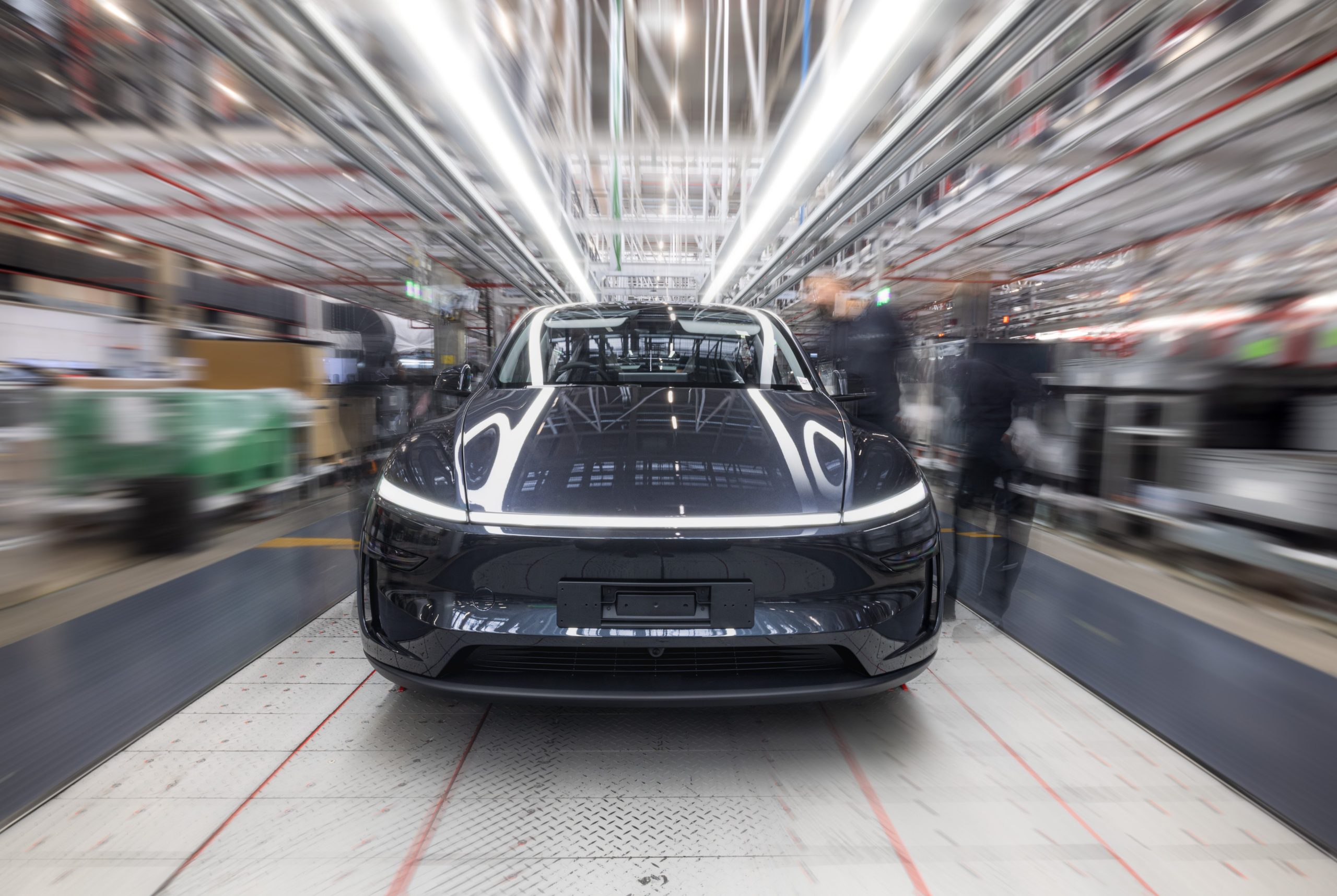
Tesla stock (NASDAQ: TSLA) just got a weird price target boost from a notable bear just a day after it announced its strongest quarter in terms of vehicle deliveries and energy deployments.
JPMorgan raised its price target on Tesla shares from $115 to $150. It maintained its ‘Underweight’ rating on the stock.
Despite Tesla reporting 497,099 deliveries, about 12 percent above the 443,000 anticipated from the consensus, JPMorgan is still skeptical that the company can keep up its momentum, stating most of its Q3 strength came from leaning on the removal of the $7,500 EV tax credit, which expired on September 30.
Tesla hits record vehicle deliveries and energy deployments in Q3 2025
The firm said Tesla benefited from a “temporary stronger-than-expected industry-wide pull-forward” as the tax credit expired. It is no secret that consumers flocked to the company this past quarter to take advantage of the credit.
The bump will need to be solidified as the start of a continuing trend of strong vehicle deliveries, the firm said in a note to investors. Analysts said that one quarter of strength was “too soon to declare Tesla as having sustainably returned to growth in its core business.”
JPMorgan does not anticipate Tesla having strong showings with vehicle deliveries after Q4.
There are two distinct things that stick out with this note: the first is the lack of recognition of other parts of Tesla’s business, and the confusion that surrounds future quarters.
JPMorgan did not identify Tesla’s strength in autonomy, energy storage, or robotics, with autonomy and robotics being the main focuses of the company’s future. Tesla’s Full Self-Driving and Robotaxi efforts are incredibly relevant and drive more impact moving forward than vehicle deliveries.
Additionally, the confusion surrounding future delivery numbers in quarters past Q3 is evident.
Will Tesla thrive without the EV tax credit? Five reasons why they might
Tesla will receive some assistance from deliveries of vehicles that will reach customers in Q4, but will still qualify for the credit under the IRS’s revised rules. It will also likely introduce an affordable model this quarter, which should have a drastic impact on deliveries depending on pricing.
Tesla shares are trading at $422.40 at 2:35 p.m. on the East Coast.
Investor's Corner
Tesla Q3 deliveries expected to exceed 440k as Benchmark holds $475 target
Tesla stock ended the third quarter at $444.72 per share, giving the EV maker a market cap of $1.479 trillion at the end of Q3 2025.
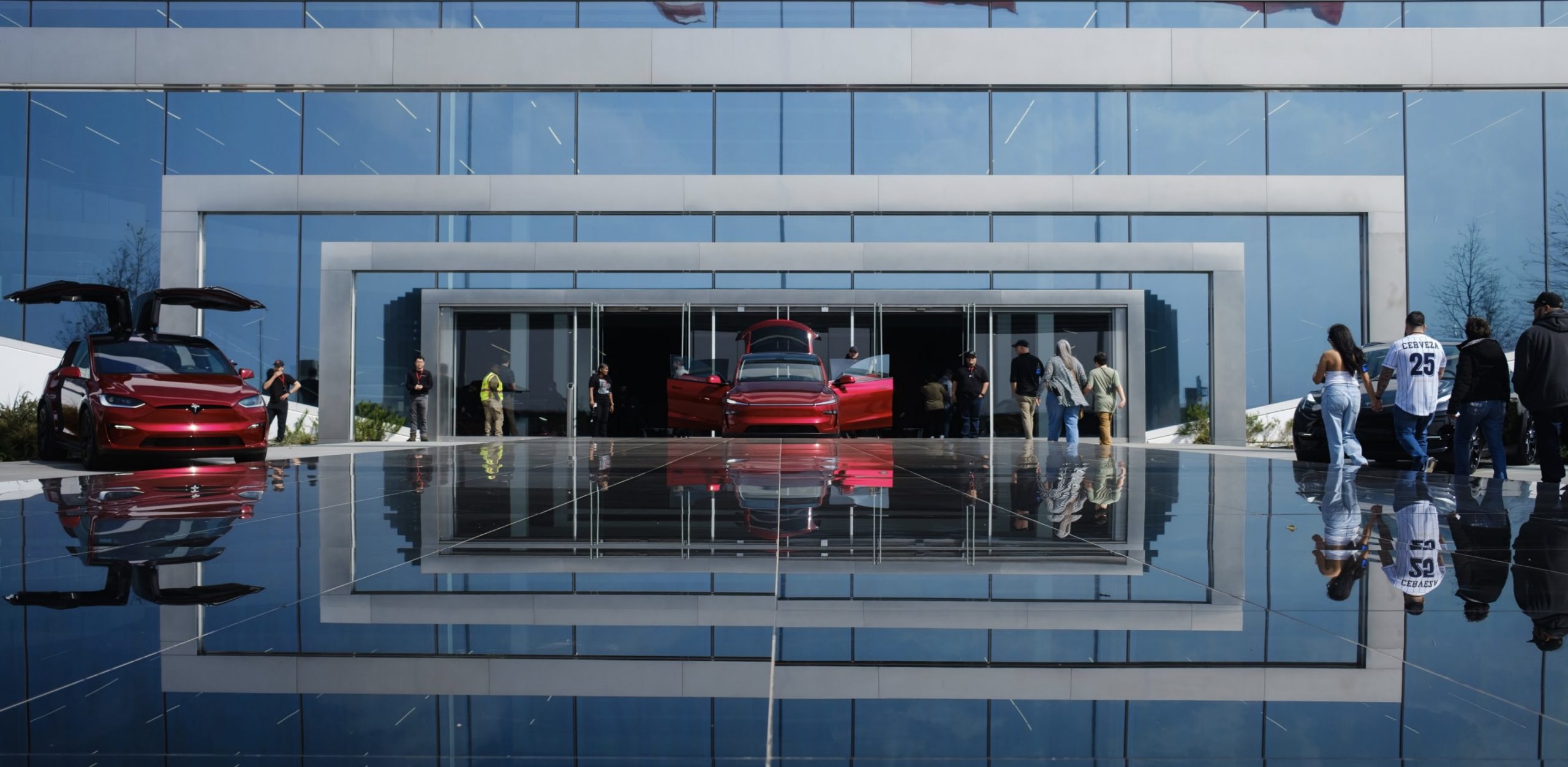
Benchmark has reiterated its “Buy” rating and $475 price target on Tesla stock (NASDAQ: TSLA) as the company prepares to report its third-quarter vehicle deliveries in the coming days.
Tesla stock ended the third quarter at $444.72 per share, giving the EV maker a market cap of $1.479 trillion at the end of Q3 2025.
Benchmark’s estimates
Benchmark analyst Mickey Legg noted that he expects Tesla’s deliveries to hit around 442,000 vehicles this Q3, which is under the 448,000-unit consensus but still well above the 384,000 vehicles that the company reported in Q2 2025. According to the analyst, some optimistic estimates for Tesla’s Q3 deliveries are as high as mid-460,000s.
“Tesla is expected to report 3Q25 global production and deliveries on Thursday. We model 442,000 deliveries versus ~448,000 for FactSet consensus with some high-side calls in the mid-460,000s. A solid sequential uptick off 2Q25’s ~384,000, a measured setup into year-end given a choppy incentive/pricing backdrop,” the analyst wrote.
Benchmark is not the only firm that holds an optimistic outlook on Tesla’s Q3 results. Deutsche Bank raised its own delivery forecast to 461,500, while Piper Sandler lifted its price target to $500 following a visit to China to assess market conditions. Cantor Fitzgerald also reiterated an “Overweight” rating and $355 price target for TSLA stock.
Stock momentum meets competitive headwinds
Tesla’s anticipated Q3 results are boosted in part by the impending expiration of the federal EV tax credit in the United States, which analysts believe has encouraged buyers to finalize vehicle purchases sooner, as noted in an Investing.com report.
Tesla shares have surged nearly 30% in September, raising expectations for a strong delivery report. Benchmark warned, however, that some volatility may emerge in the coming quarter.
“With the stock up sharply into the print (roughly ~28-32% in September), its positioning raises the bar for an upside surprise to translate into further near-term strength; we also see risk of volatility if regional mix or ASPs underwhelm. We continue to anticipate policy-driven choppiness after 3Q as certain EV incentives/credits tighten or roll off in select markets, potentially creating 4Q demand air pockets and order-book lumpiness,” the analyst wrote.
-
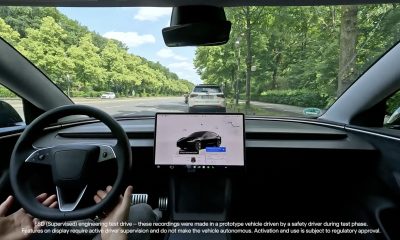
 Elon Musk2 weeks ago
Elon Musk2 weeks agoTesla FSD V14 set for early wide release next week: Elon Musk
-
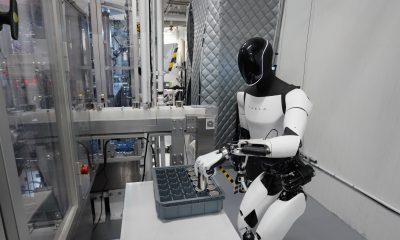
 News1 week ago
News1 week agoElon Musk gives update on Tesla Optimus progress
-
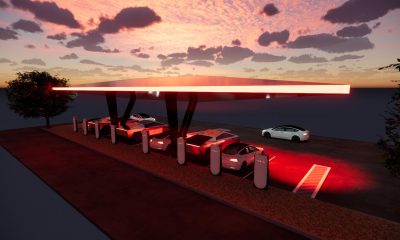
 News2 weeks ago
News2 weeks agoTesla has a new first with its Supercharger network
-
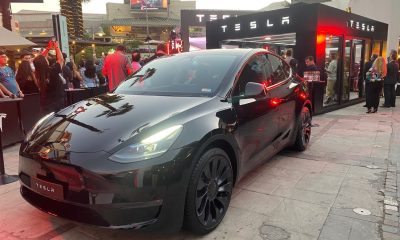
 News2 weeks ago
News2 weeks agoTesla job postings seem to show next surprise market entry
-
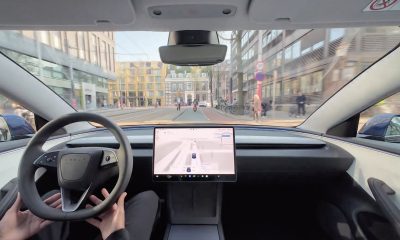
 Investor's Corner2 weeks ago
Investor's Corner2 weeks agoTesla gets new Street-high price target with high hopes for autonomy domination
-

 Lifestyle1 week ago
Lifestyle1 week ago500-mile test proves why Tesla Model Y still humiliates rivals in Europe
-
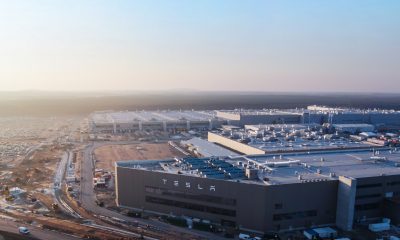
 News1 week ago
News1 week agoTesla Giga Berlin’s water consumption has achieved the unthinkable
-
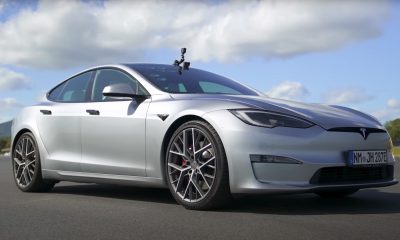
 Lifestyle1 week ago
Lifestyle1 week agoTesla Model S Plaid battles China’s 1500 hp monster Nurburgring monster, with surprising results

![TSLA analyst coverage [Source: TipRanks] TSLA analyst coverage [Source: TipRanks]](http://www.teslarati.com/wp-content/uploads/2016/05/TipRanks-1.png)
